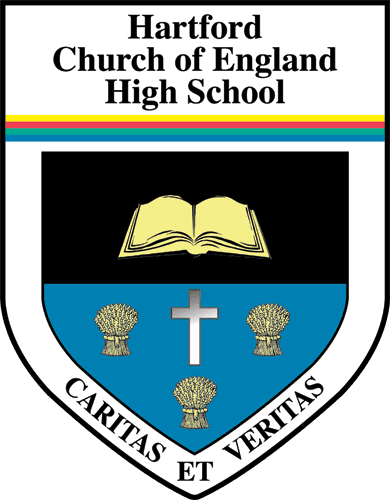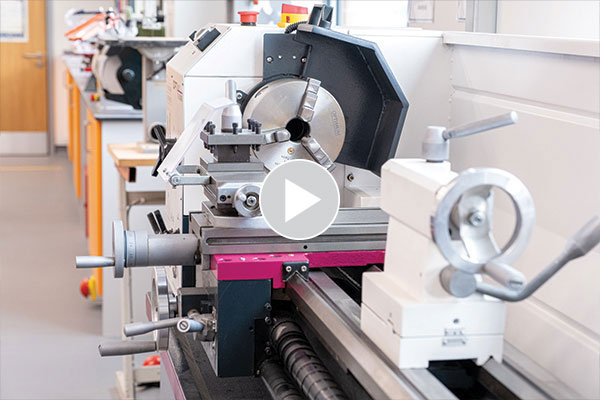Design & Technology
- Mrs R Pearson - Head of Department, Teacher of Food Technology & Electronic Products & Design Technology
- Mr P Williams - Teacher of Design Technology
- Mr A Kelly - Teacher of Design Technology
- Miss M Jump - Teacher of Design Technology
- Mr G Boys - Teacher of Design Technology
- Mr D Corris - DT Technician
"Design and Technology should be the subject where Mathematical brainboxes and Science whiz kids turn their bright ideas into useful products."
James Dyson
Intent
At Hartford Church of England High School, we strongly believe that Design & Technology is an essential part of preparing students for life in the real world. It encourages students to think outside the box, be creative and to solve problems. It gives students the opportunity to work through real life problems, both alone and as part of a team. We encourage them to use their creativity and imagination, to design and make products that solve real problems within a variety of contexts, considering their own and others’ needs, wants and values. Students are taught to follow an iterative design process that encourages them to evaluate, rethink and modify their designs as they go along.
Design & Technology forms a vital part of STEM education and we aim to link work to other disciplines such as Mathematics, Science, Engineering, Computing and Art. Design & Technology encourages students to explore clear progression paths to further study in a wide range of subjects such as Engineering, Manufacturing and Trades - to ensure they can make a valuable contribution to society when they leave education. Whether students decide to continue with their Design & Technology studies or not, they will leave with the necessary skills and knowledge to tackle the practical problems they are faced with in adulthood.
Design Rationale
At KS3 students follow the National Curriculum Programme of Study, which provides a broad background framework for all we do. Students rotate between the three main focus areas: Resistant Materials, Control and Food Technology. They spend one term in each focus area in Years 7, 8 and 9. Key skills and key knowledge for Design & Technology have been mapped across KS3 to ensure progression between year groups.
Through a variety of creative and practical activities, we teach the knowledge, understanding and skills needed to engage in an iterative process of designing and making. Students design and create products that are aimed at a specific target market, and they are encouraged to consider function and purpose.
When designing and making students are taught to:
- Design
- Make
- Evaluate
These three processes are the principles that underpin our curriculum and they are glued together by strong technical knowledge, including mechanical and electrical systems.
Delivery
Students will be presented with problems, and then guided through an iterative design process; this will enable them to solve these problems through creatively designed thinking.
Most of the work students undertake will be project-based, with the end goal of making a successful product. In the early stages, students should be gathering research that will help ensure that their solution meets the needs of the target user. Ideally, this will involve generating their own research by asking the target user what they want, and summarising the information into relevant design criteria. In the design phase, students will use this information to generate a range of potential solutions to the problem set. Ideally, the students will use design strategies to avoid the major obstacle to creative thinking - design fixation. Students will share their ideas with others to gain feedback and make appropriate modifications. In the making phase, students should be using a wide range of machines and hand tools to make a high quality product, skilfully and safely. In a typical lesson, students will be working independently, moving from task to task, regularly checking their outcome against their design work.
The final goal is for students to have acquired the necessary knowledge and skills to enable them to apply these to produce a high quality outcome that is fit for purpose and appealing to the target market.
At KS4, students can choose between various pathways. We offer GCSE Design & Technology, and the vocational qualification OCR Engineering Design. These are both two-year courses.
Impact
The effectiveness of curriculum implementation is measured by student progress; progress means knowing, remembering and producing more and is the direct result of excellent learning.
To track progress, we follow a three layered assessment structure.
High Stake Testing
High quality summative assessments (twice or three times a year) interleave knowledge and skills to support students in developing long-term memory. Stand-alone lessons ensure that students reflect and respond to teacher feedback.
Mid Stake Testing
Typically purposeful practice tasks completed independently in lessons at least twice per half-term. These tasks are used to identify learning gaps prior to high stake testing. Students receive personalised written feedback to which they respond in lessons.
Low Stake Testing
To embed knowledge in long-term memory, every lesson starts with students quizzed on prior knowledge (Do Now Tasks). Student performance is then used effectively by teachers to identify misconceptions and plan accordingly to narrow knowledge gaps.





